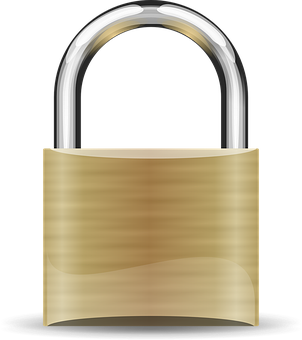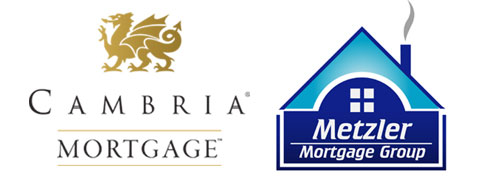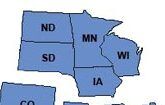-
Share via:
(651) 552-3681
Home Purchase - Home Refinance
Serving MN WI IA ND SD CO FL
- Home
- Reviews
- Apply
- Quick Qualify
- Rates & Costs
- Loan Programs
- Bad Credit Loans
- Buying a House
- Commercial / Apartment
- Doctor Loans
- FHA Loans
- Down Payment Assistance
- First Time Home Buyer
- HomeReady
- Investor DSCR Loans
- Luxury home financing
- Jumbo Loans
- Loans for Self Employed
- New Construction Loans
- No Down Payment Loans
- No Doc / Non-QM
- Refinancing
- Contract for Deed Refi
- Renovation Loans
- USDA Loans
- VA Loans
- Client Resources
- After BK or Foreclosure
- The Home Loan Process
- Daily Mortgage News
- Your credit score
- Student loans
- Homebuyer Classes
- Mortgage FAQ
- Glossary of Mortgage Terms
- Use a Bank or Broker?
- Fixed or ARM
- Home Buyers Guide
- Mortgage Rate Locks
- Long Term Rate Locks
- Mortgage Loan Limits
- No Closing Cost Loans
- Get a Second Opinion
- Tips for a smooth closing
- Top Mortgage Mistakes
- Foreclosures / Short Sales
- How to buy foreclosures
- Well and Septic
- Beware Predatory Lenders
- About
- Blog
- My Acct
Navigation- Home
- Reviews
- Apply
- Quick Qualify
- Rates & Costs
- Loan Programs
- Bad Credit Loans
- Buying a House
- Commercial / Apartment
- Doctor Loans
- FHA Loans
- Down Payment Assistance
- First Time Home Buyer
- HomeReady
- Investor DSCR Loans
- Luxury home financing
- Jumbo Loans
- Loans for Self Employed
- New Construction Loans
- No Down Payment Loans
- No Doc / Non-QM
- Refinancing
- Contract for Deed Refi
- Renovation Loans
- USDA Loans
- VA Loans
- Client Resources
- After BK or Foreclosure
- The Home Loan Process
- Daily Mortgage News
- Your credit score
- Student loans
- Homebuyer Classes
- Mortgage FAQ
- Glossary of Mortgage Terms
- Use a Bank or Broker?
- Fixed or ARM
- Home Buyers Guide
- Mortgage Rate Locks
- Long Term Rate Locks
- Mortgage Loan Limits
- No Closing Cost Loans
- Get a Second Opinion
- Tips for a smooth closing
- Top Mortgage Mistakes
- Foreclosures / Short Sales
- How to buy foreclosures
- Well and Septic
- Beware Predatory Lenders
- About
- Blog
- My Acct

When getting a home loan, one of the biggest concerns is the interest rate you get. Interest rates can change daily, sometimes hourly, and also vary based on loan type (like Conventional, FHA, VA loans), purpose of the loan (purchase, refinance, owner occupied home, investment property), credit scores, and when is the loan closing.
Once your Loan Officer has determined all of those items, you will be quoted an interest rate and closing cost combination based on interest rates available on that day, and based on when you anticipate closing the loan.
You can then choose to lock the interest rate, or float the interest rate. Locking is exactly what the name means. Locked. If rates go lower before closing, you DO NOT get the lower rate. On the other hand, if rates go higher before closing, the lender can NOT increase your interest rate either. Floating means just the opposite. You are NOT locked, and you are gambling that interest rates gets better. Most lenders will require you lock a rate no later than about 10-days prior to closing so they have time to prepare the paperwork with the exact rate, send proper disclosures to you, etc.
I can't tell the future, we can only forecast it and play the odds.
Interest rates and lock periods
When you're locking in a rate, lenders have to secure funds today for your future closing date when they need to write a check. Lenders hedge their interest rate risk, so the longer out from the day of locking to the day of closing, the more risk to the lender of market changes. This simply translates into slightly higher interest rates for the longer lock periods.
Most online, newspaper, and generic interest rate quoting is based on a 30-day lock.
FOR EXAMPLE ONLY - NOT ACTUAL INTEREST RATES:
- a 15 day lock rate may be 4.25%%
- a 30, or 45 day lock rate may be 4.375%
- a 60 or 75 day lock may be 4.500%
- a 120 day lock may be 4.750%
To lock in for longer periods than 75-days, a consumer would likely pay a nonrefundable lock fee that would be forfeited if the consumer broke the lock. This is typically 1/2 to 1% of the anticipated loan amount.
See our article about Long-Term Mortgage Rate Locks
The lack of upfront fees in the short-term locks seems to make walking away from a rate lock a painless exercise, but you should think again.
Think twice BEFORE you break the lock on that mortgage rate
You've locked yourself into a good mortgage interest rate for 30-days and you are very happy. You expect to close a month from now, on the house you want, at a payment you can afford. Suddenly, interest rates start to drop and the rate you've locked in doesn't look quite so good.
Why did you lock in the rate in the first place? Because a rate lock is a form of insurance to keep the interest rate from escalating to the point where monthly payments on your proposed loan become un-affordable. The only time such locks become an issue for cost-conscious consumers is when rates are dropping and each fraction of a percent represents a savings over the locked rate.
For example, take a $125,000 30-year fixed-rate loan. The monthly payment at 5.00% percent interest works out to $671.03. At 4.875%, it goes down just $9.52, to $661.51. Over the full course of the loan (30-years), that represents an extra $3,427.20 in your pocket.. Sounds nice... but...
Pause BEFORE you Break a Rate Lock
If you're tempted to break a rate lock and head for another lender, experts warn that you should tread carefully and consider the time and expense that breaking the lock can incur.
Breaking rate locks is easy to do. One simply walks away and does not close the loan. However, there could be expensive repercussions to that action.
Consider the costs involved in chasing a lower interest rate ... could be numerous, from a forfeited application fee to the loss of nonrefundable fees paid up front, to being billed for expenses incurred by the lender (like appraisal), to a variety of expenses to be reimbursed the seller, the real estate company, or both, as well as other vendors involved in the transaction, to being sued by a lender or other party to the transaction. Review your rate lock form. Most spell out exactly what the lender will do if you break the lock.
Most appraisals are not transferrable. You could spend another $400 - $500 on a new appraisal .
Most people are not in a loan for 30-years. So using the same loan example used earlier, at a more realistic 10-years, your savings are only $1,142Be sure you'll benefit from a lower interest rate
There are other factors to consider, not the least of which is whether you may pay more in the short term than you'll save over the long haul.
Few home buyers will own a house for 30 years. If you own a home for a more typical 10-year period, the $9.52 a month reduction in our example above amounts to only $1142.40, which could easily be eaten up in time and fees to break the lock.
When purchasing a home, there's also the strong possibility that walking away from a lock can keep you from closing on time and thus may blow the whole deal.Lenders will have to do new verification's to the new lender (tax returns, employment, bank accounts, new appraisal, etc). There are a number of administrative things that take time. So you're looking at maybe at least 20-days to redo everything
Besides the cost in time, you may also have to pay new fees to get things like an appraisal redone, and new credit reports.
If you have good credit, you shouldn't have a problem getting a loan from another lender approved at the lower interest rate, but you take the risk of being turned down by a second lender if you have any special needs.- Is the "new quote" real? Are you just looking at something online, or did you actually do an application?
- Are they quoting a 30-day lock rate when you need a 60-day lock?
- Does the new quote contain discount points?
How Rate Locks Work From the Lenders Standpoint
When your mortgage company locks your mortgage rate, it sets in motion a whole series of events behind curtain. I'll save you all the details, but understand they can't just arbitrarily change your rate lock. The percentage of locked loans that never close (known as fallout) is closely monitored. From the moment we lock a loan, we hedge our interest-rate risk to guarantee you that we will have the money to fund your loan at closing.
If market prices (our cost of money) improves during the lock period, we lose money on the hedge. If the loan never closes, we are totally out the hedge money. This can (and does) add up to millions of dollars of losses that get passed on to you with higher rates. The rate lock goes both ways. If rates go down, you don't get the lower rate. If rates go up, you won't be charged more.
Funny how homeowners are only concerned when rates go down, but never seem to appreciate it that we can't raise rates if they go up... :)
Interest Rate Float Down Options
For protection on both ends of the scale, some lenders have "float-down" provisions. In these contracts, the consumer locks in a rate, and if rates come down, the consumer has the opportunity to lock in a new lower rate once before closing.
Assume you locked at 7.00%. If the rate drops to 6.875%, the lender can't really do anything for you. This is considered normal daily fluctuations in rate.
On the other hand, assumes rates sharply drop to 6.50% after you lock, and a week before your closing. Your lender will be able to float your rate down to 6.625%.
(all rates in this article are just examples, and not real rates)
The Bottom Line - Chasing a Moving Target
In the end for almost everyone, chasing anything but a significant drop in interest rates, something which likely won't happen in the normal 30 to 45 days it takes to close a loan, is futile because of what consumers pay for changing their minds.
I get people calling me saying, 'Well, let's go ahead and start the paperwork. Then, when we reach the low point we'll lock it in.'" I've done this for years and I don't know where the low point is ... so people need to have realistic expectations. Otherwise, they are just filling out paperwork for no good reason.
Remember, it is extremely hard for anyone to catch the rock bottom of interest rate cycles. It is easy to get near the bottom. Be realistic. If you are comfortable with the rate, lock. Then don't look back!
** EXPERIENCE MATTERS **
Top rated mortgage lender locally and nationally, year after year... This is because clients agree - Experienced Loan Officers with mortgage interest rates you can brag about and amazing service clearly sets us apart from the big banks and online lenders.
Address
1549 Livingston Ave, Suite 105
Saint Paul, MN 55118Contact
Main (651) 552-3681
Joe@JoeMetzler.com
Cell/Text (651) 705-6261We also call from
(651) 615-7545
(952) 486-6135License Info
Cambria Mortgage
NMLS# 322798 Branch:1888858Joe Metzler Loan Officer
NMLS# 274132. License MN #MLO-274132, WI #11418. SD #MLO.03095, ND #NDMLO274132, IA #36175, FL #LO119389, CO #100536785Privacy Policies | Disclaimers | Disclosures | Terms of Use | DMCA Notice | ADA Notice |

Equal Housing Lender. The Joe Metzler Team at Cambria Mortgage lends in Minnesota, Wisconsin, Iowa, North Dakota, South Dakota, Colorado, and Florida only. This is not an offer to lend or to extend credit, nor is this a guaranty of loan approval or commitment to lend. Information here can become out of date, and may no longer be accurate. Products and interest rates are subject to change at any time due to changing market conditions. Not all programs available in all states. Actual rates available to you may vary based upon a number of factors. Consumers must independently verify the accuracy and currency of available mortgage programs. All loan approvals are subject to the borrower(s) satisfying all underwriting guidelines and loan approval conditions and providing an acceptable property, appraisal and title report. Joe Metzler, NMLS 274132, Cambria Mortgage NMLS 322798. © 1998 - 2025.









